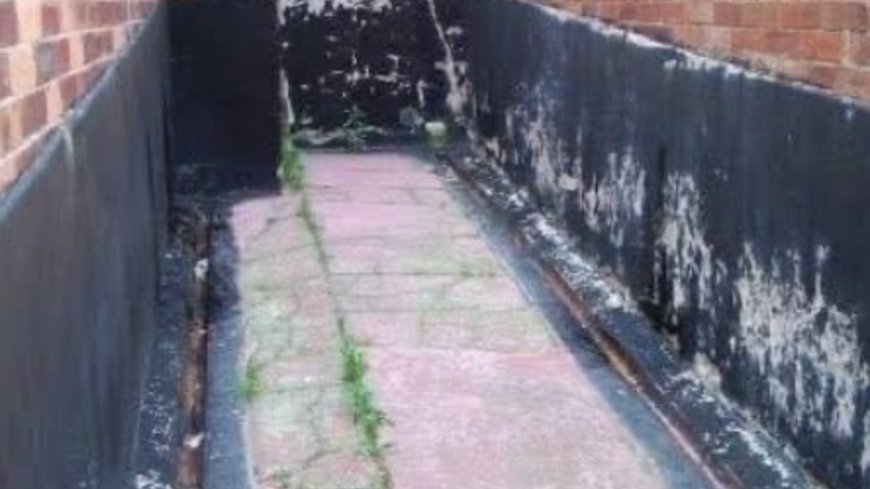EFL club became infamous for away end toilets before historic stadium was demolished
Legendary architect Archibald Leitch designed some of Britain’s most iconic stadiums, but there’s one he might have wanted to re-do if he had his time again. Historic venues like Anfield, Highbury, White Hart Lane, Ibrox and Goodison Park were all fully or partly designed by Leitch between 1899 and 1939. Highbury was one of many grounds designed by Scottish architect Archibald LeitchGETTY Although some grounds remain fully intact to this day, save for a few facelifts over the years, many have unfortunately been demolished entirely and lost to the years. For several venues, demolition was a necessity due to demands for an increased capacity, while others were simply past their use-by date. One of which was Saltergate – the home of League Two side Chesterfield from 1871 to 2010. The Spireites have since moved into the SMH Group Stadium, which cost £13million. Officially known as the Recreation Ground, Saltergate’s 139-year history made it one of the oldest venues across England by the time it was closed. The stadium also provided the set for 2009 film The Damned United where it was used as a makeshift Wembley Stadium, Bloomfield Road, Carrow Road and Derby County‘s old Baseball Ground. Saltergate boasted a capacity of 8,504, with the most vocal Spireites fans situated in The Kop, which featured banks of concrete terracing and metal crush barriers. As for the away supporters, they’d be situated in the Cross Street End. Similarly to The Kop, the Cross Street End boasted concrete terracing and metal crush barriers… and no roof to protect the travelling fans from the elements. But the real charm, if you can call it that, of the Cross Street End was the bathrooms. Chesterfield’s toilets at their old stadium were legend in the lower leagues of the English gameX And by bathrooms, we mean a painted black wall and was completely uncovered from above, allowing for little privacy. Despite its rustic nature, and the appearance that it could have been built by the Romans, away fans have claimed it was all part of Saltergate’s charm. On a groundhopping blog titled ‘The Wycombe Wanderer’, a user named ‘RussWWFC’ shared their experience of the venue in December 2011. “Saltergate was a real traditional venue, a bit ramshackle and rusty by the time it breathed its last, but that all added to the charm,” they wrote. On their experience in the Cross Street End, they added: “I remember it most for its spartan toilet facilities – a roofless construction with four walls and little else!” User ‘Ldnewman’ detailed a similar experience on FootballGroundMap.com and echoed a sentiment many other football fans share when it comes to new stadiums. “Too many clubs are forgetting the side of football that we all love to watch as fans,” they wrote. Chesterfield moved into the SMH Group Stadium in 2010 “From the painted black wall they called a toilet, how many new grounds can boast green urinals? “Such a great place, and it will be in my memory long after the memory of places like The Reebok or many of the carbon copy new grounds.” The Reebok, now known as the Toughsheet Community Stadium, is the home of League One side Bolton Wanderers and opened in 1997. Before moving into The Reebok, Bolton called Burnden Park home for 102 years. Another club set to bid farewell to their long-time home is Luton Town. The Hatters have been at Kenilworth Road for just over a century and rarely made significant upgrades to the venue until the Premier League forced the club to renovate one of its stands last season. But the most fabled aspect about ‘The Kenny’ is the iconic entrance into the ground for away fans. Supporters literally walk under someone’s house to get into the away end, situated in the Oak Stand. The unusual away end entrance at Luton’s home ground is through back gardensGetty Once they’re past the entry point, fans walk up an iron staircase where they can see into other people’s back gardens. However, the legendary away day will soon be no longer as Luton have submitted a detailed planning application for a new, 25,000-capacity venue in Power Court. Luton anticipate their new stadium will be completed in 2026 and aim to begin playing there at the start of the 2027/28 season. Unsurprisingly, there won’t be any entrances that allow fans to peer into the backyards of residents. Nor will there be any old-school bathrooms in the style of Chesterfield’s old ground, complete with it’s own shrubbery. Although hygiene may have gone out the window at Saltergate, the toilets in the away end no doubt provided a lasting memory for those travelling supporters. Particularly the smell.

Legendary architect Archibald Leitch designed some of Britain’s most iconic stadiums, but there’s one he might have wanted to re-do if he had his time again.
Historic venues like Anfield, Highbury, White Hart Lane, Ibrox and Goodison Park were all fully or partly designed by Leitch between 1899 and 1939.

Although some grounds remain fully intact to this day, save for a few facelifts over the years, many have unfortunately been demolished entirely and lost to the years.
For several venues, demolition was a necessity due to demands for an increased capacity, while others were simply past their use-by date.
One of which was Saltergate – the home of League Two side Chesterfield from 1871 to 2010.
The Spireites have since moved into the SMH Group Stadium, which cost £13million.
Officially known as the Recreation Ground, Saltergate’s 139-year history made it one of the oldest venues across England by the time it was closed.
The stadium also provided the set for 2009 film The Damned United where it was used as a makeshift Wembley Stadium, Bloomfield Road, Carrow Road and Derby County‘s old Baseball Ground.
Saltergate boasted a capacity of 8,504, with the most vocal Spireites fans situated in The Kop, which featured banks of concrete terracing and metal crush barriers.
As for the away supporters, they’d be situated in the Cross Street End.
Similarly to The Kop, the Cross Street End boasted concrete terracing and metal crush barriers… and no roof to protect the travelling fans from the elements.
But the real charm, if you can call it that, of the Cross Street End was the bathrooms.

And by bathrooms, we mean a painted black wall and was completely uncovered from above, allowing for little privacy.
Despite its rustic nature, and the appearance that it could have been built by the Romans, away fans have claimed it was all part of Saltergate’s charm.
On a groundhopping blog titled ‘The Wycombe Wanderer’, a user named ‘RussWWFC’ shared their experience of the venue in December 2011.
“Saltergate was a real traditional venue, a bit ramshackle and rusty by the time it breathed its last, but that all added to the charm,” they wrote.
On their experience in the Cross Street End, they added: “I remember it most for its spartan toilet facilities – a roofless construction with four walls and little else!”
User ‘Ldnewman’ detailed a similar experience on FootballGroundMap.com and echoed a sentiment many other football fans share when it comes to new stadiums.
“Too many clubs are forgetting the side of football that we all love to watch as fans,” they wrote.

“From the painted black wall they called a toilet, how many new grounds can boast green urinals?
“Such a great place, and it will be in my memory long after the memory of places like The Reebok or many of the carbon copy new grounds.”
The Reebok, now known as the Toughsheet Community Stadium, is the home of League One side Bolton Wanderers and opened in 1997.
Before moving into The Reebok, Bolton called Burnden Park home for 102 years.
Another club set to bid farewell to their long-time home is Luton Town.
The Hatters have been at Kenilworth Road for just over a century and rarely made significant upgrades to the venue until the Premier League forced the club to renovate one of its stands last season.
But the most fabled aspect about ‘The Kenny’ is the iconic entrance into the ground for away fans.
Supporters literally walk under someone’s house to get into the away end, situated in the Oak Stand.

Once they’re past the entry point, fans walk up an iron staircase where they can see into other people’s back gardens.
However, the legendary away day will soon be no longer as Luton have submitted a detailed planning application for a new, 25,000-capacity venue in Power Court.
Luton anticipate their new stadium will be completed in 2026 and aim to begin playing there at the start of the 2027/28 season.
Unsurprisingly, there won’t be any entrances that allow fans to peer into the backyards of residents.
Nor will there be any old-school bathrooms in the style of Chesterfield’s old ground, complete with it’s own shrubbery.
Although hygiene may have gone out the window at Saltergate, the toilets in the away end no doubt provided a lasting memory for those travelling supporters.
Particularly the smell.












































